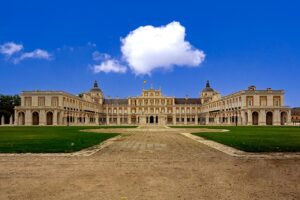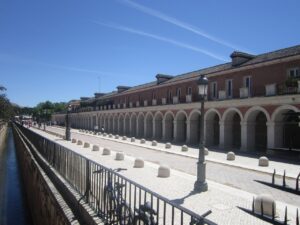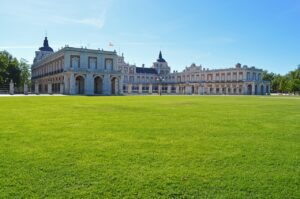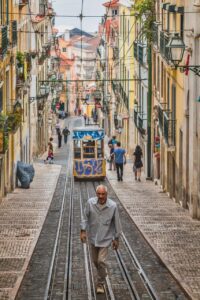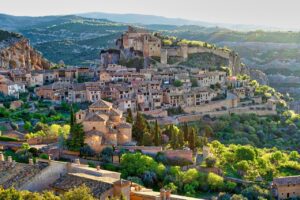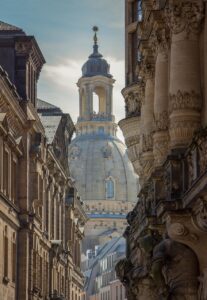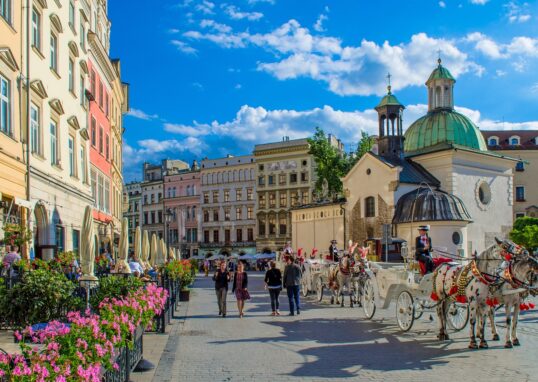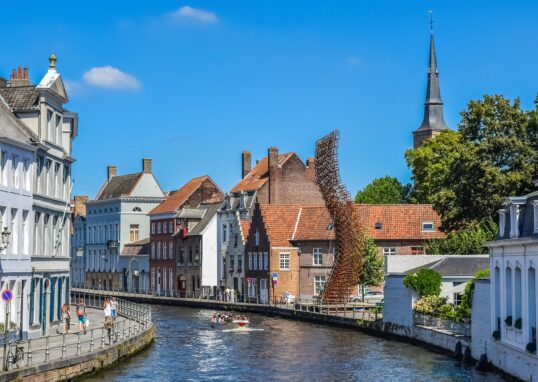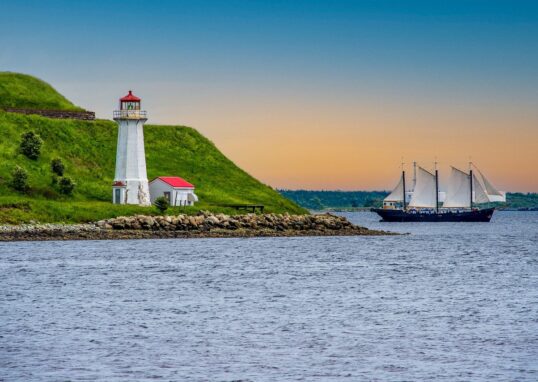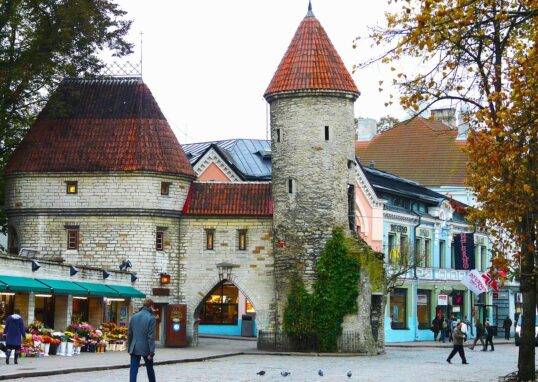
Aranjuez Cultural Landscape – A Complete Guide
The Aranjuez Cultural Landscape is one of the finest of Spain’s UNESCO World Heritage Sites. It was added to the list of World Heritage Sites in 2001. Aranjuez lies in the Community of Madrid, about 50 kilometers south of the country’s capital, Madrid. It is famous for its sumptuous palaces, exquisite gardens, and expansive landscapes. Aranjuez is not only structures. It is also about harmony between nature and human thought. These Spanish monarchs shaped this land in the 16th and 17th centuries. They wanted a place for relaxation, hunting, and recreation. With the passage of time, Aranjuez transformed into a unique cultural and natural setting. In this work, we will recount the facts regarding Aranjuez. We will discuss the surrounding places responsible for its beauty. The language will be simple, with brief sentences and silky smooth connections, so that everyone can enjoy the story.
History of Aranjuez
Early Beginnings
History of Aranjuez goes as far back as medieval times. The territory was originally inhabited by the Order of Santiago, a magnificent Spanish religious and military order. Spanish monarchs subsequently learned about the beauty of the spot.
The Royal Touch
King Philip II was instrumental in designing Aranjuez. He started designing a royal palace here in the 16th century. He wished to have gardens, hunting grounds, and agricultural lands. The River Tagus and River Jarama served to irrigate the land and provide verdure. Later kings, Philip III and Philip IV, expanded the vision. But it was in the 18th century under King Charles III and Charles IV that Aranjuez reached its glory. Palaces, fountains, and gardens flourished. Artists, architects, and landscape gardeners came from Italy and France to plan the landscape.
UNESCO Recognition
Because of its perfect blend of architecture, gardens, and cultivation, UNESCO proclaimed Aranjuez a Cultural Landscape in 2001. It is currently an example of how humankind and nature can coexist in harmony.
Main Highlights of Aranjuez Cultural Landscape
The Royal Palace of Aranjuez
The center of interest in the landscape is the Royal Palace of Aranjuez. It is one of the richest of Spain’s palaces. Built in the 16th century and expanded further in the 18th century, it is an example of Renaissance as well as Baroque styles. The palace has beautiful rooms, long corridors, and beautifully decorated halls. The most famous is the Porcelain Room, which is covered with fine porcelain panels. Another jewel is the gold and red-spattered Throne Room. Visitors can walk through royal apartments, ballrooms, and chapels. Every room is reminiscent of Spanish royalty. The palace also has paintings, tapestries, and antique furniture.
The Gardens of Aranjuez
Gardens form the nucleus of the cultural landscape. They were an Italian and French combination but an appropriate fit to Spanish climate and ways.
The Island Garden (Jardín de la Isla)
It is surrounded by the River Tagus. It was designed at the time of Philip II. It is full of fountains, statues, and walkways under cover. It gets peaceful due to the sound of running water.
The Parterre Garden
Built in the 18th century, this garden reflects French influence. It is geometric and elegant, with trimmed hedges and flowerbeds. The Fountain of Hercules and Antaeus is a main attraction here.
The Prince’s Garden (Jardín del Príncipe)
It is the biggest garden in Aranjuez. It borders the Tagus River. It features a plethora of romantic paths, pavilions, and exotic trees. An interior gem is the Casa del Labrador, or the palace of the Labrador. It is a small neoclassical palace.
The Casa del Labrador
This neoclassical palace lies within the Prince’s Garden. It was built during the late 18th century reign of King Charles IV. It was used as a recreative retreat. The interior of the palace is luxuriously decorated. Marble, crystal chandeliers, and tapestries give it a luxurious appearance. Casa del Labrador is not as formal as the main palace.
The Historic Town of Aranjuez
The town itself is part of the cultural heritage. Streets are wide and designed in harmony with palaces and gardens. The town plan conforms to Renaissance ideas of balance and order. The town is interspersed by squares, churches, and manor houses. It appears an extension of the royal palace. Bazaars, restaurants, and cultural centers add to its beauty.
Agriculture and Irrigation
Aranjuez is also famous for its rich agricultural fields. The Tagus and Jarama rivers helped in irrigation. Vegetable gardens, orchards, and agricultural fields were a part of the royal plan. Even today, Aranjuez is famous for strawberries and asparagus. Local products express the connection between nature and human imagination.
Cultural Importance
The Aranjuez Cultural Landscape expresses the connection among art, architecture, and nature. It shows how kings utilized landscapes to express power and refinement. It also inspired other European royal gardens. The connection among palaces, gardens, water, and agriculture was replicated throughout Europe. It is not only a travel destination today but also an inhabited cultural district. Festivals, concerts, and exhibitions uphold the traditions.
Visiting Aranjuez
How to Get There
Aranjuez is easily reached from Madrid. On the train, it’s approximately 45 minutes from Madrid’s Atocha Station. By car, it takes around one hour.
Best Time to Visit
Spring and autumn are the most pleasant seasons. Spring boasts blooming flowers in the garden. Autumn has golden and reddish leaves. Summer is warm but mornings and evenings are still pleasant.
What to Expect
Visitors can explore the Royal Palace, gardens, and town. Walking is the most enjoyable method to view the landscape. There are guided tours, but the majority prefer to walk on their own.
Surrounding Places near Aranjuez Cultural Landscape
Aranjuez Cultural Landscape is a UNESCO World Heritage Site in Spain. It is located about 48 kilometers south of Madrid. The area is famous for its royal palace, gardens, and river views. Its loveliness does not end here, though. Close to Aranjuez, there are many other cities, towns, and attractions that can be visited. All these destinations render any journey worthwhile. They offer history, art, nature, food, and culture of Spain.
Madrid – The Capital of Spain
Madrid is the nearest large city to Aranjuez. It is about 48 kilometers away from Aranjuez. It takes less than an hour to reach the city by train, bus, or car. Madrid is lively. It’s the capital and an extremely important cultural center in Europe. The city has a mix of ancient and modern architecture. There are many museums, palaces, and plazas that tourists can explore.
Key Attractions in Madrid
- The Royal Palace of Madrid
This is the Spanish royal palace. This is the biggest palace in all of Europe. The palace has more than 3,000 rooms. The royal art, furniture, and architecture can be seen by the visitor. - Prado Museum
It is one of the world’s greatest art museums. It has art from Spanish masters like Velázquez and Goya. It has the work of foreign masters like Titian and Rubens. - Retiro Park
A green oasis in Madrid’s city center. People enjoy walking, boating, and relaxing here. It is a UNESCO World Heritage Site as part of “Paseo del Prado and Buen Retiro.” - Puerta del Sol and Plaza Mayor
They are lively squares in Madrid. They are filled with shops, cafes, and street artists. They portray the lively life of the Spanish capital.
Why Visit Madrid from Aranjuez?
Owing to its proximity, the majority of tourists cover both locations in the same tour. Aranjuez offers the royal rural atmosphere, while Madrid reveals the royal city power. Together, they complete the Spanish cultural experience.
Toledo – The City of Three Cultures
Toledo is another important city near Aranjuez. It is about 60 kilometers to the southwest. The city has been known as the “City of Three Cultures.” Christians, Muslims, and Jews lived together there for centuries.
Key Attractions in Toledo
- Toledo Cathedral
A grand Gothic cathedral with exquisite art collections. It is considered one of the most important churches in Spain. - Alcázar of Toledo
A historic fortress towering over the city. Today, a military museum. - Jewish Quarter
There are many synagogues and Jewish monuments in Toledo. Synagogue of El Tránsito is one of the gems. - River Tagus Views
Same river that flows along Aranjuez passes around Toledo. The city is like a medieval masterpiece from the Mirador del Valle view point.
Why Visit Toledo from Aranjuez?
The bond between Toledo and Aranjuez is solid. The two towns are both located on the Tagus River. Both towns have royal and cultural histories. Visiting Toledo after Aranjuez enhances the exposure to Spanish heritage.
Chinchón – A Historic Town with a Unique Plaza
Chinchón is a small town near Aranjuez. It is approximately 25 kilometers from Aranjuez. It is one of the most charming towns in the Madrid region.
Key Attractions in Chinchón
- Plaza Mayor
Central square is circular and made up of wooden balconies. It has been used for bullfights, markets, and festivals. - Church of Nuestra Señora de la Asunción
The church has a painting by the famous artist Francisco de Goya. - Castle of Chinchón
15th-century castle that embodies the medieval past of the town. - Local Cuisine
Local food made from garlic and anisette liqueur is famous in Chinchón. Many tourists love to taste local food in old-fashioned taverns.
Why Visit Chinchón from Aranjuez?
It offers a peaceful respite into authentic Spanish village life. After the regal elegance of Aranjuez, the rural charm of Chinchón is a welcome respite.
Ocaña – A Town of Noble Squares
Ocaña lies a mere 20 kilometers south-east of Aranjuez. It is well-known for its stunning main square.
Key Attractions in Ocaña
- Plaza Mayor of Ocaña
A large square with arcades and old buildings. It is the center of local activity and celebrations. - Churches and Fountains
Ocaña has historic fountains like Fuente Grande. Churches like San Juan Bautista add to its beauty.
Why Visit Ocaña from Aranjuez?
The town’s large plaza offers a different style compared to Aranjuez’s gardens. It shows the civic side of Spanish heritage.
Cuenca – The Hanging Houses
Cuenca is further away but well worth a visit. It lies approximately 170 kilometers east of Aranjuez. It is a UNESCO World Heritage town.
Key Attractions in Cuenca
- Hanging Houses (Casas Colgadas)
Houses built on cliff tops, hanging over a deep gorge. They are the iconic landmark of Cuenca. - Cuenca Cathedral
A Gothic cathedral overlooking the old city. - Abstract Art Museum
Cuenca has respect for modern art as well. This museum has works of Spanish contemporary artists.
Why Visit Cuenca from Aranjuez?
Cuenca is endowed with natural scenery and human innovation. Its cliff houses and cliffs are so unique compared to the Aranjuez riverside gardens.
Consuegra – Windmills of Don Quixote
Consuegra is 80 km from Aranjuez. It is famous for its windmills. These windmills were used as a backdrop in Miguel de Cervantes’ book Don Quixote.
Key Attractions in Consuegra
- Windmills on the Ridge
Some of the restored windmills are located on the hilltop. They offer a picturesque Spanish countryside scene. - Castle of Consuegra
There is a medieval castle near the windmills. Tourists can view its walls and towers.
Why Visit Consuegra from Aranjuez?
The site connects literature to history. Guests are able to return to the Don Quixote world after strolling in royal gardens.
Alcalá de Henares – Birthplace of Cervantes
Alcalá de Henares is located to the northeast of Madrid. It is 100 kilometers from Aranjuez. It is another UNESCO World Heritage city.
Key Attractions in Alcalá de Henares
- Birthplace of Miguel de Cervantes
The birthplace of the famous writer who lived in this house is a museum now. - University of Alcalá
A very old Spanish university. It influenced Spanish culture and education. - Historic Streets
It has ancient streets with arcades, shops, and cafes.
Why Visit Alcalá from Aranjuez?
It adds literary depth to a journey through the culture. Cervantes’ universe coexists with the royal and artistic tradition of Aranjuez.
La Mancha Countryside
North of Aranjuez, La Mancha country stretches far and wide. It is a land of plains, vineyards, and castles.
Highlights of La Mancha
- Wine Routes
La Mancha is Spain’s most significant wine region. Wines are tasted by visitors in local wineries. - Castles and Villages
There are many small castles and villages spread around. - Don Quixote Trails
Tourists can follow paths which connect with Cervantes’ novel.
Why Explore La Mancha from Aranjuez?
It offers open landscape after Aranjuez’s graceful gardens. It offers rural Spain in its most attractive form.
The Tagus River Route
The Tagus River flows through Aranjuez. Its path offers many scenic stops.
- Aranjuez to Toledo – Wooded riverbanks with wildlife.
- Fishing and Boating – Local pastime on the river.
- Small Villages – Charming Spanish villages with stone houses.
The river creates a natural link between the surrounding towns.
Conclusion
The Aranjuez Cultural Landscape is a treasure. But its value multiplies when travelers explore the surrounding places. From pulsating capital city Madrid to medieval city Toledo, from serene town Chinchón to vast plains of La Mancha, every place has something different to offer. The surrounding region is a culture belt, history belt, and nature belt. All these locations put together make up a complete Spanish experience. Aranjuez is the start, and the rest are the following chapters. The Aranjuez Cultural Landscape is not just a palace or a garden. It is a design art, cultural art, and art of nature. It was built by Spanish kings and has harmony between architecture and nature. Royal Palace, gardens, and Casa del Labrador speak of beauty and power. Aranjuez town, squares, and streets complete the scene. Farming and irrigation add a further dimension.

